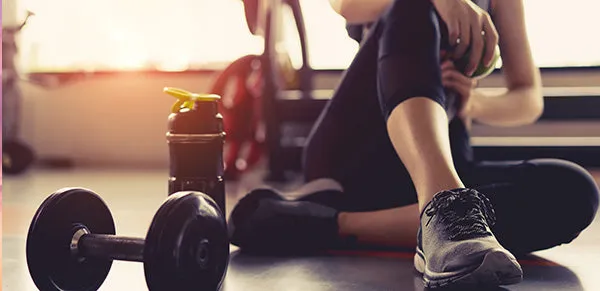How to Create a Sustainable Routine for Lifelong Physical Health

Introduction:
Establishing a sustainable routine for lifelong physical health is essential to maintaining vitality, strength, and wellness throughout every stage of life. A well-rounded health regimen goes beyond just exercise; it encompasses balanced nutrition, mental well-being, flexibility, and cardiovascular care. When each of these elements is thoughtfully integrated into daily life, they create a solid foundation for enduring health and longevity.
Creating a sustainable health routine is not about strict diets or grueling workouts but about small, manageable changes that can be maintained in the long run. Developing habits that align with personal goals, lifestyles, and capabilities can significantly boost both physical and mental well-being. This article will explore the key pillars of a sustainable health routine and provide guidance on how to incorporate them effectively for lifelong benefits.
Prioritize Consistent Exercise for Physical Health:
Exercise is a fundamental component of a healthy lifestyle. Engaging in physical activity daily helps maintain a healthy weight, reduces the risk of chronic diseases, and improves mental clarity. Exercise routines should be diverse to address different physical needs, including strength, endurance, and flexibility. Regular physical activity, combined with a balanced approach, can reduce the risk of lifestyle-related conditions and promote overall wellness.
To ensure consistency, choose exercises that are enjoyable and adaptable to individual needs. Cardio workouts, strength training, and stretching exercises are all beneficial, and incorporating them into a weekly routine will help sustain motivation. Set achievable goals to track progress, like aiming for 150 minutes of moderate exercise per week, and maintain a variety of workouts to avoid monotony and injuries.
Emphasize Balanced Nutrition for Optimal Health:
Nutrition plays a crucial role in physical health and overall well-being. A balanced diet supports muscle growth, boosts immune function, and provides energy. Including a mix of proteins, carbohydrates, fats, vitamins, and minerals in daily meals promotes bodily functions and contributes to a sustainable health routine. Whole grains, lean proteins, fresh fruits, and vegetables are essential for nourishing the body.
Developing a sustainable nutrition plan means avoiding fad diets or overly restrictive eating patterns. Instead, focus on portion control, nutrient-dense foods, and hydration. Planning meals ahead can help prevent unhealthy choices, and incorporating a variety of foods ensures that nutrient needs are met. Additionally, reducing processed foods and added sugars can significantly impact long-term health and help prevent weight gain, inflammation, and fatigue.
Incorporate Mental Health Practices to Support Physical Health:
Physical health is closely linked to mental well-being. Stress, anxiety, and other mental health challenges can hinder physical progress and overall motivation to maintain a health routine. Incorporating mindfulness practices like meditation, deep breathing exercises, and spending time outdoors can help manage stress and support a healthy mind-body connection. Prioritizing mental health is essential for maintaining motivation and consistency in physical wellness practices.
Taking time for hobbies, connecting with friends, and setting aside moments for relaxation can also improve mental resilience. Mental health practices that promote relaxation and self-reflection provide clarity, helping individuals make conscious choices about their health routines. In the long run, a balanced mind positively impacts physical health by reducing stress-related inflammation, improving sleep, and encouraging regular activity.
Focus on Flexibility and Mobility for Longevity:
Flexibility and mobility are key aspects of physical health, especially as the body ages. Regular stretching, yoga, or mobility exercises can improve joint health, reduce muscle stiffness, and enhance balance, which is essential for preventing falls and injuries in later years. Practicing flexibility exercises helps maintain a full range of motion, supporting other forms of physical activity by reducing the risk of strains and discomfort.
To create a sustainable flexibility routine, incorporate stretching exercises at the end of workouts or as a morning routine. Prioritize muscles that are used frequently, such as the back, legs, and shoulders. Additionally, practicing gentle yoga or Pilates a few times per week can enhance flexibility and core strength, contributing to a well-rounded health regimen that supports lifelong physical wellness.
Establish a Cardiovascular Routine to Boost Heart Health:
Cardiovascular health is crucial for overall longevity and well-being. Regular cardio exercises such as walking, jogging, cycling, and swimming strengthen the heart, improve lung capacity, and enhance circulation. Engaging in moderate cardio activities regularly has numerous benefits, including maintaining healthy blood pressure, reducing the risk of heart disease, and increasing stamina for daily activities.
To establish a sustainable cardio routine, aim for at least 30 minutes of moderate-intensity aerobic exercise, like brisk walking or cycling, five days a week. Include variations in your cardio workout to keep it engaging and challenging. For instance, mix running with interval training or take up a fun cardio-based activity like dancing. Even activities like brisk walks after meals can be beneficial in maintaining cardiovascular health.
Additional Tips for Sustainable Health:
- Set Realistic Goals: Start with small, attainable goals that build up gradually. Consistent progress is more effective than drastic changes that are hard to sustain.
- Track Progress: Keeping a journal of exercise routines, meals, and mental health practices can help identify areas of improvement and celebrate achievements.
- Include Variety: Adding diversity to your routine prevents boredom and targets different muscle groups, contributing to balanced physical health.
- Listen to Your Body: Adjust intensity based on how you feel. Rest when needed to avoid burnout and overuse injuries.
Natural Options to Support Physical Health:
While it may be tempting to rely on cosmetic solutions to enhance physical appearance, prioritizing natural and sustainable approaches is essential for long-term health. Engaging in regular physical activity, eating a balanced diet, and maintaining mental well-being establish a strong foundation for overall resilience. These practices not only improve physical fitness but also foster a sense of well-being that enhances quality of life.
In some cases, individuals may consider procedures like tummy tuck surgery to address specific aesthetic concerns. Such interventions can be beneficial, but they should complement rather than replace a robust health routine. A holistic approach that emphasizes sustainable habits empowers individuals to achieve and maintain a naturally fit and healthy appearance, supporting both physical and mental health.
Conclusion:
Creating a sustainable health routine requires a balance of physical, nutritional, and mental practices that promote longevity and vitality. By incorporating regular exercise, balanced nutrition, mental wellness practices, and flexibility routines, individuals can build a solid foundation for lifelong physical health. Embracing a gradual and realistic approach ensures that these habits are maintainable and beneficial over time.
A commitment to lifelong health involves small, intentional choices each day. Whether through regular cardio exercises, nutrient-dense meals, or mental health practices, sustainable habits are key to long-term well-being. By focusing on consistency and personal growth, anyone can create a routine that promotes enduring health and happiness throughout all stages of life.



